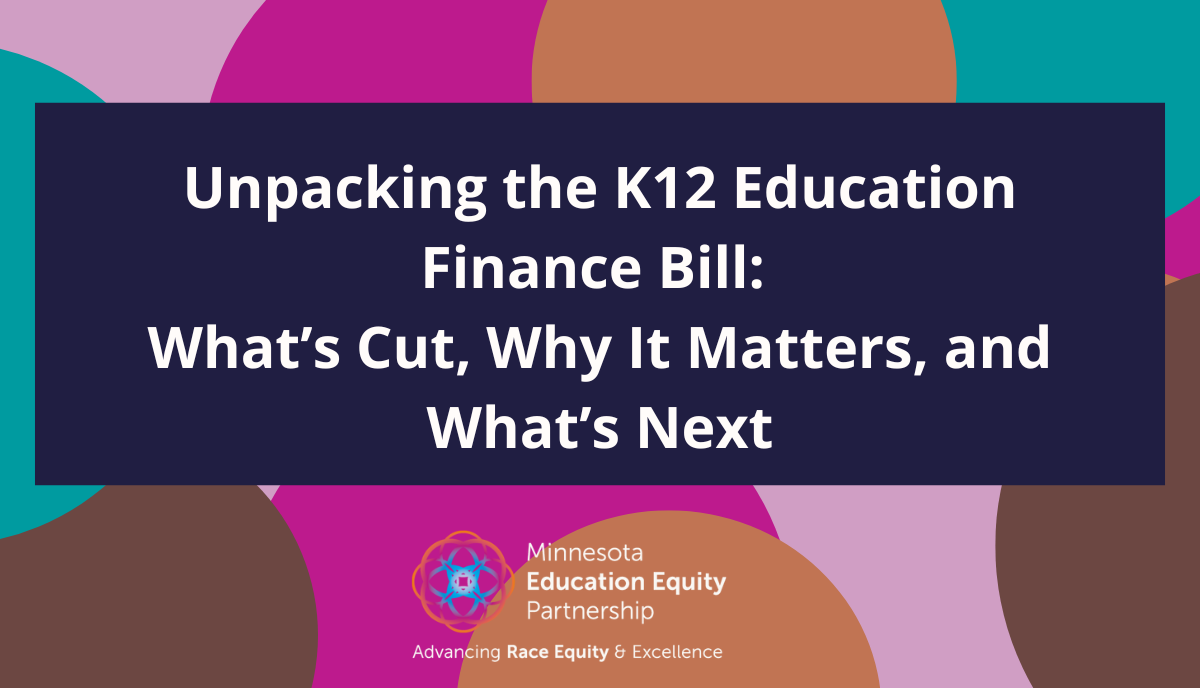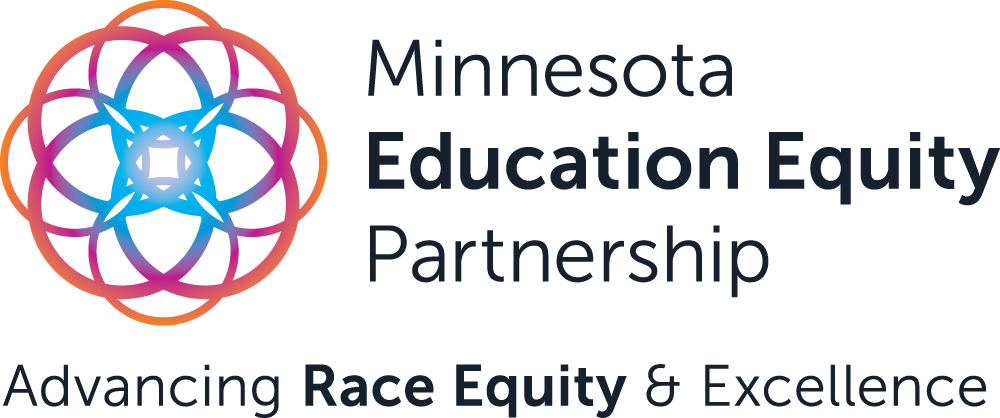
Unpacking the K12 Education Finance Bill and What it Means for Education Equity
By Leiataua Dr. Jon Peterson
Senior Policy Fellow, MnEEP
(With additional reporting by Molly Priesmeyer,
MnEEP Director of Communications)
Minnesota lawmakers have passed a new K-12 Education Finance and Policy Bill for the 2025–26 legislative session. At a glance, the bill appears to offer some stability: per-pupil funding remains tied to inflation, and major classroom cuts have been largely avoided — at least for now.
But system stability is not the same as education equity.
Beneath the headline numbers lies a deeper concern: the steady dismantling of the supports that make education accessible and equitable. While the general funding formula remains intact, equity infrastructure is being scaled back. Even steeper cuts are already locked in for future years.
This isn’t just about what’s in the budget. It’s about who’s being left out—and what that means for People of Color Indigenous (POCI) students the future of public education in Minnesota.
What the Budget Does: Preserves the Formula, Cuts the Supports
What’s Funded:
- $25.73 billion total for K–12 in 2026–27
- $4.2 million increase over the last biennium
- Inflation indexing preserved for the general education formula
This gives school districts some planning stability in the face of rising costs, which is a needed legislative and district win right now.
What’s Cut — and Why It Matters:
To preserve classroom-level funding, the bill makes significant cuts to equity-critical programs that ensure historically underserved students can access a meaningful education.
- Teacher pipeline programs: Cut by $8 million per year ($16 million total). This undermines recruitment and retention of diverse educators, disproportionately affecting students of color and multilingual learners who benefit from culturally responsive teaching.
- Special education transportation: Reimbursement reduced from 100% to 95%. This pushes costs back to local districts and limits legally required services for students with disabilities.
- Charter school bill back aid: Cut by $19.96 million. This impacts operational support for charter schools, many of which serve students in under-resourced communities.
- School library aid: Cut by $19.62 million. Students in rural and low-income districts are especially affected, as school libraries are often their only source of books, research tools, and internet access.
- State school librarian position: Eliminated $260,000. This removes statewide coordination of literacy and access, creating additional barriers for students already facing academic inequities.
What’s added:
- Permanent licensure for short-call substitute teachers
- Expanded school access to epinephrine inhalers and opioid antagonists
- Flexibility for districts to start the school year earlier
These measures are helpful at a practical level, but they fall far short of the comprehensive, equity-focused reinvestment Minnesota schools urgently need.
Without renewed investment in educator diversity, special education, and student access supports, these changes will not address the deeper structural barriers students continue to face.
What’s Coming Next: Deferred Cuts, Deferred Responsibility
While the 2026–27 funding cycle avoids the harshest impacts, it kicks the hardest decisions down the road:
- A $420 million cut to general education is scheduled for the next biennium.
- A $250 million reduction in special education costs must be identified by a new Blue Ribbon Commission.
The Commission is tasked with identifying $250 million in special education cost savings by 2026. If it falls short, the Minnesota Department of Education will be legally required to make the remaining cuts itself.
This structure shields lawmakers from accountability and sidelines the communities most affected. There is no guaranteed role for POCI-led organizations, disability advocates, or directly impacted families. No process allows for community input. No safeguards exist to protect the students most at risk.
This isn’t just a policy workaround. It’s a retreat from democratic responsibility, placing critical decisions in the hands of unelected bodies with no transparency, no oversight, and no public voice.
Shrinking Further: 2028–29 Reductions
Already programmed into the next budget cycle:
- Special education transportation reimbursement will drop again—from 95% to 90%—costing districts an additional $48.2 million.
- School library aid will lose another $22 million, compounding earlier losses.
- State librarian funding remains eliminated, signaling a permanent retreat from state-level literacy leadership.
These aren’t simply budget tweaks. They’re a coordinated drawdown of the systems that support educational equity statewide.
Equity Isn’t Optional—It’s Constitutional
Minnesota’s constitution guarantees every child the right to an adequate education. The Minnesota Supreme Court made that clear in Skeen v. State (1993). When the Legislature fails to uphold that right, the courts may intervene—and they should.
This bill may protect the formula, but it doesn’t protect the rights of all students. These cuts will disproportionately impact:
- Students with disabilities, who depend on transportation and specialized services
- POCI students and multilingual learners, who thrive with representative teachers and culturally inclusive classrooms
- Rural and low-income students, for whom school libraries are essential learning resources
Lawmakers Acknowledge the Risk
Lawmakers from both parties have voiced concern over the bill’s long-term impact, making one thing clear: This isn’t a long-term solution. It’s a temporary budget fix with compounding consequences.
- Rep. Cheryl Youakim (DFL) praised the effort to preserve inflation indexing and avoid classroom cuts “wherever possible.”
- Rep. Ron Kresha (R) called the bill a “canary in the coal mine,” warning of deeper fiscal problems.
- Sen. Mary Kunesh (DFL) acknowledged this includes “some of the largest education cuts in years.”
How Minnesota Must Lead Now
Minnesota faces a defining choice: protect equity or entrench inequality.
Without decisive action, Minnesota is on track to cement a two-tier education system—one for communities with resources, and another for everyone else. This would directly betray our constitutional promise that every child deserves equitable access to a free public education, a right the courts have recognized (Plyer v. Doe, 1982) as playing a “fundamental role in maintaining the fabric of our society.”
To uphold that promise, Minnesota must:
- Restore and protect equity infrastructure—including special education, teacher pipelines, and access supports.
- Reject austerity disguised as reform.
- Raise sustainable revenue to meet actual district needs.
- Ensure community voice and representation in all decision-making.
- Hold lawmakers accountable short-term choices that cause long-term harm
We are at a critical turning point—one that puts the future of our education system and our students at risk. This is about more than budgets or deficits. It’s about the future we choose, and whether we are willing to uphold the human dignity and educational rights of every student in Minnesota in both policy and practice.
